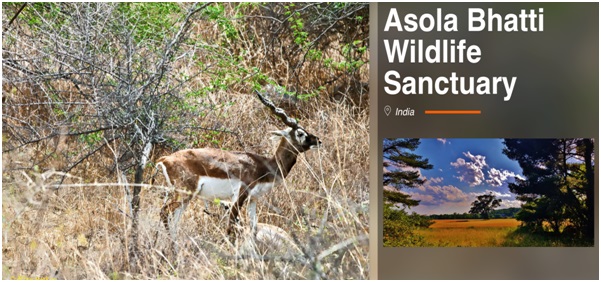Exercise Milan (The Hindu)

- 01 Dec 2023
Why is it in the News?
Indian Navy To Conduct One Of Its Largest Naval Exercises — MILAN — Next February; More Than Fifty Countries Expected To Participate
About Exercise Milan:
- Exercise Milan is a biennial multilateral naval exercise that began in 1995, and has since significantly expanded in scope and scale to become the largest exercise held by India.
- Initially involving only Indonesia, Singapore, Sri Lanka, and Thailand, it has evolved significantly in terms of participants and exercise complexity.
- Aligned with India's 'Look East Policy' initially, Milan expanded under the 'Act East Policy' and Security And Growth for All in the Region (SAGAR) initiative, welcoming Friendly Foreign Countries (FFCs).
- The mid-planning conference for Milan-24 occurred in October.
- The last edition of Milan, which is held off Visakhapatnam, saw participation from over 40 countries showcasing its substantial growth in scale and international engagement.
- The next edition of Exercise MILAN is scheduled to be held in February 2024 and is expected to see the participation of over 50 countries.
- It reflects the significant expansion of the Navy’s engagements as well as its capacity to assist countries in the Indian Ocean Region (IOR) as the first responder and Preferred Security Partner.
Sindhudurg Fort (Financial Express)

- 01 Dec 2023
Why is it in the News?
The Indian Navy is gearing up to showcase its operational prowess in a significant ‘Operational Demonstration’ scheduled for December 4, 2023, at Sindhudurg Fort in Maharashtra.
About Sindhudurg Fort:
- Sindhudurg Fort is a historically significant stronghold situated on an islet in the Arabian Sea, just off the coast of Maharashtra in western India.
- Positioned on Kurte Island near Malvan town in Sindhudurg District within the Konkan region of Maharashtra, this formidable fortress was commissioned and constructed under the reign of Chhatrapati Shivaji Maharaj of the Maratha Empire in 1664.
- The primary objective behind its construction was to counteract the escalating influence of foreign colonizers, including English, Dutch, French, and Portuguese merchants, and to curb the rise of the Siddis of Janjira.
- The Bakhar (a form of historical narrative written in Marathi prose) written by Chitragupta aptly mentions this fort as the most invaluable asset to Shivaji Maharaj.
Key Features:
- The fort spans 48 acres and boasts fortified walls that are 29 feet high and 12 feet thick, extending for a distance of two miles.
- Guarding these walls are 52 bastions equipped with embrasures for cannons.
- Access to the fort is through the Dilli Darwaja, the main gate, uniquely designed to blend seamlessly with the walls and visible only from close quarters.
- The fort is surrounded by several smaller forts, including Padmagad, Rajkot, and Sarjekot.
- An intriguing feature within the fort is a slab bearing the handprint and footprint of Chhatrapati Shivaji Maharaj.
- Additionally, a small temple dedicated to the Maratha King is situated within the fort's bounds
Asola Bhatti Wildlife Sanctuary (Indian Express)

- 01 Dec 2023
Why is it in the News?
The Delhi High Court has criticized the forest department's proposal to hold a walkathon and cyclathon in a wildlife sanctuary, calling it a "haphazard exercise."
About Asola Bhatti Wildlife Sanctuary:
- Asola Bhatti Wildlife Sanctuary covers 32.71 sq. km on the Southern Delhi Ridge of the Aravalli hill range, bordering Delhi and Haryana.
- It's in Southern Delhi and parts of Faridabad and Gurugram districts in Haryana.
- It's a part of the Sariska-Delhi Wildlife Corridor, linking Sariska Tiger Reserve in Rajasthan to Delhi Ridge.
- The sanctuary gets its name from the contiguous Asola village near Tughlaqabad in the Delhi NCR.
- Vegetation: The vegetation is classified as Northern Tropical Thorn Forests, known for thorny appendages and special leaves.
- The climate has extreme summer heat and significant winter cold due to its inland position.
- Flora: The main exotic plant is Prosopis juliflora, and the primary native plant is Diospyros montana.
- Fauna: The sanctuary is home to various animals like Golden Jackals, striped hyenas, Indian Crested Porcupines, Civets, Jungle Cats, Snakes, Monitor Lizards, and Mongoose.
- This sanctuary plays a crucial role in connecting wildlife across different areas.
World AIDS Day 2023 (Indian Express)

- 01 Dec 2023
Why is it in the News?
On the World AIDS Day 2023, observed each year on December 1, the World Health Organisation emphasised recognising and remembering the contribution of communities in controlling HIV-AIDS.
About World AIDS Day 2023:
- World AIDS Day which is observed every year on December 1 is a global movement to unite people in the fight against HIV and AIDS.
- Since 1988, when the World Health Organisation (WHO) recognised the day, communities have stood together on World AIDS Day to show strength and solidarity against HIV stigma and to remember lives lost.
- It is an opportunity to reflect on the progress made to date and raise awareness about the challenges that remain to achieve the goals of ending AIDS by 2030.
- The theme of World AIDS Day 2023 is– “Let Communities Lead"
What is HIV/AIDS?
- Human Immunodeficiency Virus (HIV) is a virus that attacks the immune system, compromising the body's ability to fight off infections and diseases.
- Acquired Immunodeficiency Syndrome (AIDS) is the advanced stage of HIV infection, characterized by severe immune system damage.
- Transmission: HIV spreads through unprotected sexual contact, sharing contaminated needles, and from an infected mother to her child during childbirth or breastfeeding.
- Treatment: Antiretroviral Therapy (ART) is the primary treatment for HIV/AIDS, managing the virus and supporting the immune system.
- Lifelong adherence is essential, ensuring viral suppression.
- Regular monitoring by healthcare providers is vital, and global challenges such as stigma and healthcare access persist in the fight against HIV/AIDS.
Gajraj Suraksha (Elephant Safety) System (New Indian Express)

- 01 Dec 2023
Why is it in the News?
"In a first", through cutting-edge indigenous technology, the Indian Railways has successfully developed a system, preliminarily called as ‘Gajraj Suraksha (Elephant safety) system’ to prevent elephant–train collisions in the forest areas.
About Gajraj Suraksha:
- Gajraj Suraksha uses an AI-based algorithm and a network of sensitive optical fiber cables to detect elephants approaching railway tracks, aiming to address elephant fatalities resulting from train accidents.
- How this will work?
- The system functions by sensing pressure waves generated by elephant movements along the tracks.
- As elephants move, the optical fibers detect vibrations from their footsteps, triggering signals within the fiber network.
- This enables the system to identify elephants up to 200 meters ahead of their arrival on the track.
- The Optical Fibre Cable (OFC)-based Intrusion Detection System sends alarms to station masters upon detecting movement along the tracks.
- The network is designed to accurately track elephant movement, allowing prompt communication to nearby station masters.
- This ensures timely information to locomotive drivers, facilitating the slowing down or stopping of trains to prevent potential collisions with elephants.
- The Indian Railway plans to introduce this system in West Bengal, Odisha, Jharkhand, Assam, Kerala, certain parts of Chhattisgarh, and Tamil Nadu.
